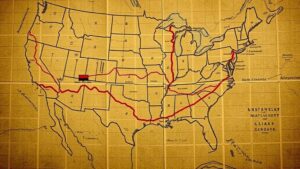Mapping Ancient Gathering Spaces for Relics of Community Rituals
Mapping Ancient Gathering Spaces for Relics of Community Rituals
The study of ancient gathering spaces reveals vital insights into the socio-cultural dynamics of historical communities. These locales served as collaboration points for ritualistic activities, exchanging ideas, and forming communal identities. This article delves into various ancient civilizations, mapping their sacred spaces, and understanding how these sites influenced communal rituals.
Defining Gathering Spaces
Gathering spaces are defined as locations where individuals congregate for a specific purpose, often related to cultural, spiritual, or civic functions. e spaces can include temples, plazas, amphitheaters, and other structures. Historical evidence suggests that these spaces were carefully engineered to facilitate community interaction.
Case Studies of Ancient Gathering Spaces
The following sections present detailed examples of ancient gathering spaces, providing insights into their role within their respective societies.
The Agora of Athens (5th Century BCE)
The Agora of Athens served as the heart of Athenian public life. This open space, surrounded by numerous buildings, acted as a marketplace, a political venue, and a center for religious activity. Archaeological findings, such as the Temple of Hephaestus and the Stoa of Attalos, highlight the Agoras multifaceted role in facilitating citizen interactions.
The Great Plaza of Tikal (300-900 CE)
Tikal, located in modern-day Guatemala, showcases an impressive assembly of ceremonial plazas surrounded by towering temples. The Great Plaza, in particular, served as a hub for Mayan rituals. Research indicates that gatherings here were not solely for religious purposes but also involved political events, suggesting a blend of civic and spiritual life.
The Importance of Mapping
Mapping ancient gathering spaces provides invaluable data on architectural design and sociopolitical dynamics. By examining the spatial arrangement of these sites, researchers can infer communal values and interactions. The geospatial analysis reveals the relationships between location, structure, and function in urban planning.
Utilizing GIS Technology
Geographic Information Systems (GIS) have become pivotal in mapping ancient gathering spaces. These tools allow for a detailed analysis of site topography and spatial relationships. For example, studies of the Roman Forum have utilized GIS to trace alignment patterns and accessibility, illustrating how location fostered social gatherings.
Rituals and Community Identity
Rituals conducted in gathering spaces play a significant role in reinforcing community identity. Ritualistic practices often center around shared beliefs and values, creating a sense of belonging among participants.
The Role of Rituals in Social Cohesion
Anthropological research underscores that rituals enact communal values and sustain social cohesion. For example, the Festival of Dionysus in ancient Athens involved dramatic performances that not only entertained but also cultivated civic pride and identity.
Challenges in Mapping Ancient Sites
Mapping ancient gathering spaces presents several challenges, including the degradation of sites over time, the inaccessibility of certain areas, and the need for careful interpretation of archaeological findings.
Preservation and Access Issues
Many sites face threats from modern development, climate change, and tourism, complicating preservation efforts. UNESCO world heritage initiatives aim to protect these spaces but require ongoing funding and international cooperation.
Conclusion
Mapping ancient gathering spaces is crucial for understanding the community rituals that defined various civilizations. As more technological tools become available, researchers can delve deeper into these historical locales, uncovering their significance in shaping communal identities and social structures. Future studies must continue to emphasize preservation and relevance in modern society to ensure that the lessons from these ancient spaces are not lost to time.
- Continued research and interdisciplinary collaboration are necessary to advance our understanding of ancient gathering spaces.
- Utilizing modern technology like GIS can enhance our mapping accuracy and aid in preservation efforts.
- Maintaining an objective and balanced perspective is vital in interpreting archaeological findings and their cultural significance.


